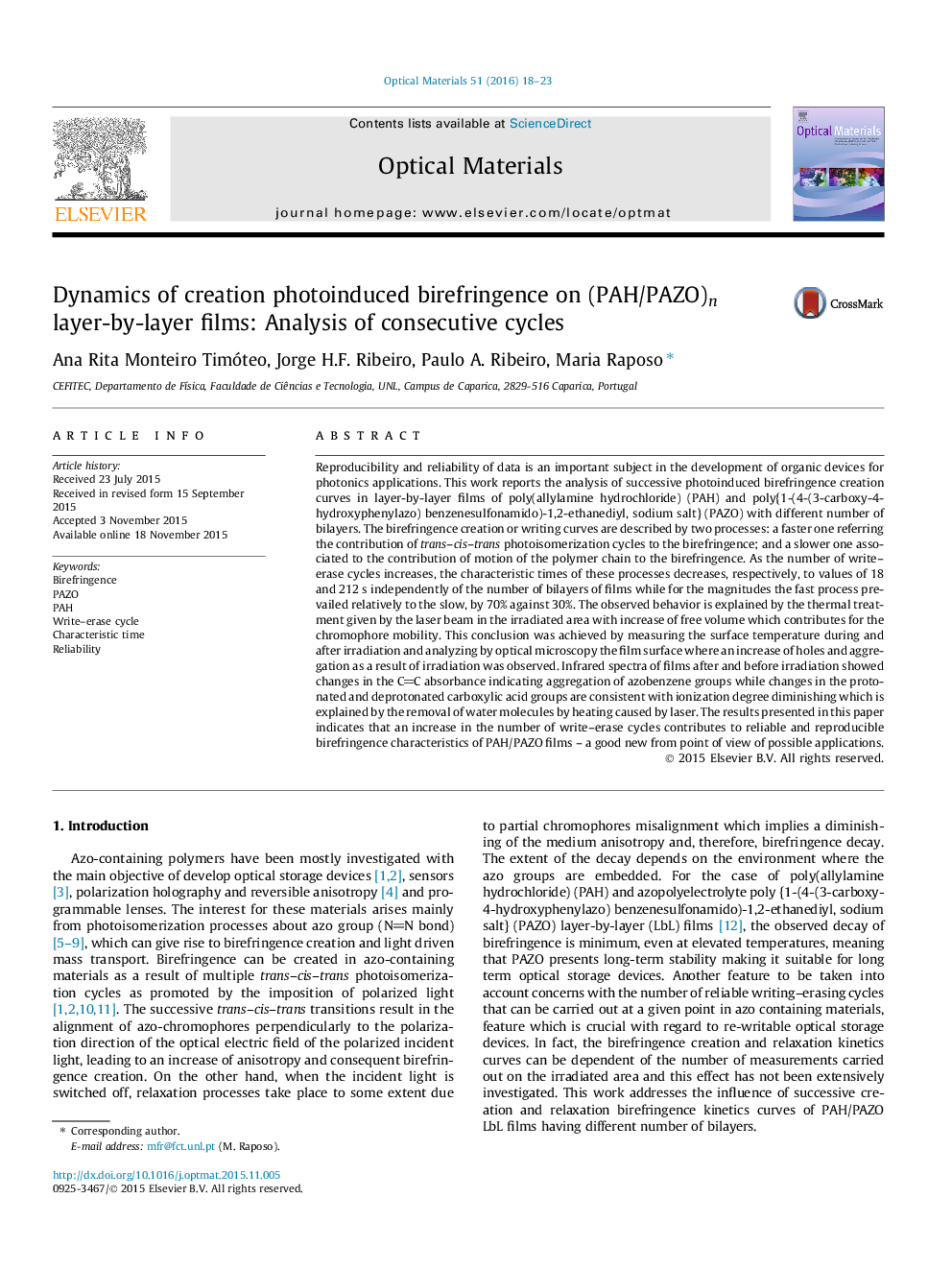| Article ID | Journal | Published Year | Pages | File Type |
|---|---|---|---|---|
| 1493518 | Optical Materials | 2016 | 6 Pages |
•Birefringence curves in PAH/PAZO films are dependent of the write–erase cycles.•Chromophore orientation characteristic times are dependent of number of bilayers.•Characteristic times progress to a constant value with the write–erase cycles.•Chromophore mobility is attained by the thermal treatment given by laser beam.
Reproducibility and reliability of data is an important subject in the development of organic devices for photonics applications. This work reports the analysis of successive photoinduced birefringence creation curves in layer-by-layer films of poly(allylamine hydrochloride) (PAH) and poly{1-(4-(3-carboxy-4-hydroxyphenylazo) benzenesulfonamido)-1,2-ethanediyl, sodium salt} (PAZO) with different number of bilayers. The birefringence creation or writing curves are described by two processes: a faster one referring the contribution of trans–cis–trans photoisomerization cycles to the birefringence; and a slower one associated to the contribution of motion of the polymer chain to the birefringence. As the number of write–erase cycles increases, the characteristic times of these processes decreases, respectively, to values of 18 and 212 s independently of the number of bilayers of films while for the magnitudes the fast process prevailed relatively to the slow, by 70% against 30%. The observed behavior is explained by the thermal treatment given by the laser beam in the irradiated area with increase of free volume which contributes for the chromophore mobility. This conclusion was achieved by measuring the surface temperature during and after irradiation and analyzing by optical microscopy the film surface where an increase of holes and aggregation as a result of irradiation was observed. Infrared spectra of films after and before irradiation showed changes in the CC absorbance indicating aggregation of azobenzene groups while changes in the protonated and deprotonated carboxylic acid groups are consistent with ionization degree diminishing which is explained by the removal of water molecules by heating caused by laser. The results presented in this paper indicates that an increase in the number of write–erase cycles contributes to reliable and reproducible birefringence characteristics of PAH/PAZO films – a good new from point of view of possible applications.
Graphical abstractFigure optionsDownload full-size imageDownload high-quality image (116 K)Download as PowerPoint slide
